Part 1: Trailblazers
This week marks the beginning of Black History Month, and we think it’s the perfect time to showcase some talented Black ceramists from the US and abroad. While the month was created in 1976 to focus attention on the contributions of African Americans to the United States, it’s now also celebrated in Canada, the United Kingdom, Ireland, the Netherlands and Germany! With so many Black artists making important contributions to the world of ceramics, we’ve decided to do a two part series, focusing on artists of yesterday and today. For Part 1, we’re looking at four artists from the past whose art and efforts continue to influence the ceramics community today.
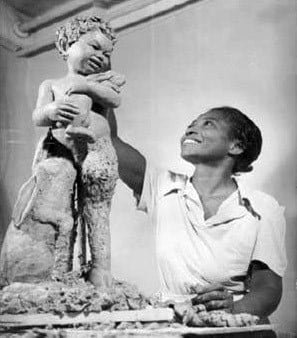

Augusta Savage
1892-1962
A prominent figure in the Harlem Renaissance during the 1920s and ’30s, Savage was an incredibly talented sculptor who became one of the most influential Black teachers of her time.1 Accomplished in ceramics, plaster, and bronze, she is best known for her large scale sculpture The Harp, which was commissioned for the 1939 World’s Fair (where she was the only Black woman to be selected).2
Savage was a woman of firsts, being the first African American artist to be elected to the National Association of Women Painters and Sculptors3 and the first Black woman in the US to open her own gallery.4 In 1932 she also opened her own studio, the Savage Studio of Arts and Crafts–where she became active in enrolling Black artists in the newly founded Works Progress Administration’s Federal Art Project. The studio quickly became the foundation for some of the most well-known figures of the Harlem Renaissance, and it was there where she taught artists such as abstract painter Norman Lewis, figurative painter Jacob Lawrence and portrait artist Gwendolyn Knight.5 Savage was a true trailblazer, and her impact as an artist, teacher, and social activist continues to be felt today.
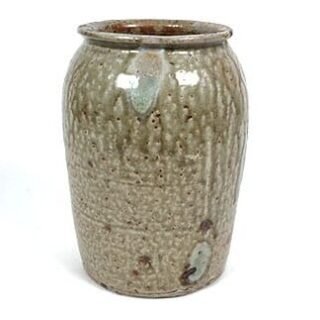


H. Wilson & Company Pottery
Not an individual artist, but a collective of five, the H. Wilson & Company Pottery was the first Black owned business in the state of Texas. Beginning production between 1869 and 1872, the pottery was started by Hiram, James, Wallace, George, and Andrew, five Freedmen of slave owner John Wilson, from whom they later took their surname. Having been forced to work in John Wilson’s pottery, once freed they quickly transferred their skills to a pottery of their own on land granted to them by Wilson.6
The potters, led by Hiram, were incredibly industrious, producing a high volume of beautiful salt-glazed functional ware. On top of this, they created an altogether new style of pottery, diverging from the techniques they’d been taught while enslaved.7 They devised new horseshoe-shaped handles that hugged the body of the pot which had a reduced risk of breakage, as well redesigned the pot rims to provide a more secure fit that better preserved food.8 The company also began the practice of applying a potter’s mark to all of their wares, which was not only unheard of at the time, but was a means of transforming “each piece into a testament of their labor, artistry, and determination.”9
The works of H. Wilson & Company pottery can still be found throughout central Texas, in homes, antique shops, private collections, and museums, and they remain a testament to the artistry and ingenuity of these makers. The Wilson Pottery Foundation, formed by descendants of the Wilson family, has opened the Wilson Pottery Museum in Seguin where the legacy of Wilson pottery is being preserved for generations to come.10


Tuskegee Institute Pottery which Hathaway established. https://www.artsbma.org/collection/bell-top-vase/
Isaac Scott Hathaway
1872 – 1967
This Kentucky-born sculptor was motivated to pursue a career in art after a childhood trip to the Cincinnati Art Museum revealed that amongst the many busts of famous figures, not a single Black person was present, most notably his hero, abolitionist Frederick Douglass.11 As he later noted, “I made up my mind that day that I was going to make busts and statues of our great [African Americans] and put them where people can see them.”12
With this resolve, Hathaway began an intense education, first studying ceramics at Chandler College in Lexington, Kentucky and Pittsburg Normal College in Pittsburg, Kansas, then continued at Cincinnati Art Academy, and the College of Ceramics at the State University of New York at Alfred.13 Over a career of 80 years, the artist did indeed fulfill his promise, producing over 100 busts and masks of prominent Black Americans.
Equal to his contribution to Black visibility in art is Hathaway’s legacy as an educator. In 1915, Hathaway offered the region’s first course in ceramics at a Black institution, Branch Normal College (now the University of Arkansas at Pine Bluff), where he taught until 1937.14 He later went on to established the Ceramics Department at Tuskegee University, followed by a ceramics class at Alabama Polytechnic Institute (now Auburn University), where he was the first African American to teach at the white segregated school. He left Tuskegee that year and became the director of ceramics at Alabama State University, where he stayed until he retired in 1963.15
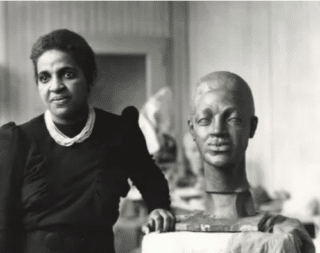
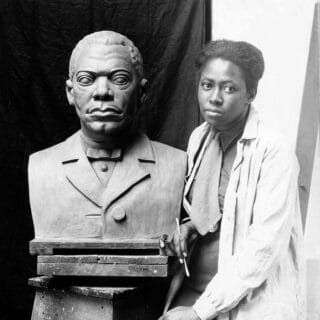
Selma Hortense Burke
1900 – 1995
Another important figure of the Harlem Renaissance, Burke was a talented sculptor, best known for her bas relief portrait of President Franklin D. Roosevelt.16 She was an artist who excelled across media, and while today her bronze and stone works tend to take center stage, Burke’s earliest forms were figures in clay created as a child from a nearby riverbed.17 She would later describe the feeling of the clay moving through her hands as a first encounter with sculpture, saying “It was there in 1907 that I discovered me.”18
Initially trained as a nurse, Burke began her art studies at Sarah Lawrence College in New York,19 and with the help of The Rosenwald and the Boehler Foundation Grants in the late 1930s, she later went on to study sculpture in Vienna and with Aristide Maillol in Paris, returning to complete her Master of Fine Arts degree from Columbia University in 1941.20 As she continued her artistic career, she also became committed to teaching art to others, establishing the Selma Burke Art School in New York City and opened the Selma Burke Art Center in Pittsburgh, Pennsylvania, which played an integral role in the Pittsburgh art community.21
Burke’s work focused on portraits of famous Black figures as well as lesser-known subjects, while also exploring human emotion and family relationships in more expressionistic ways.22 Her pieces are now held in the collections of the Metropolitan Museum of Art, the Whitney Museum of American Art, the Philadelphia Museum of Art, among others. She is also the recipient of a number of honorary degrees and awards, including a lifetime achievement award from the Women’s Caucus for Art, in 1979.23
As we conclude this journey celebrating the profound impact of past Black ceramists and sculptors, we are reminded that history is not a static entity but a dynamic force, shaped by the talents, resilience, and creativity of individuals who have paved the way for future generations. The artists we’ve explored in Part 1 of our series have left an indelible mark on the ceramics community, and their legacies continue to resonate today. May their stories inspire us to seek out and uplift the voices of artists from all walks of life, contributing to a more inclusive and vibrant world of ceramics.
Do you have a favorite historic Black artist, ceramic or otherwise, that you feel deserves a mention? Let us know in the comments below! And remember to return later this month for Part 2 of our series, where we’ll introduce you to five black artists making an impression in today’s ceramic scene.
- https://dos.fl.gov/cultural/programs/florida-artists-hall-of-fame/augusta-savage/ ↩︎
- https://www.theguardian.com/artanddesign/2019/may/08/augusta-savage-black-artist-new-york ↩︎
- https://en.wikipedia.org/wiki/Augusta_Savage ↩︎
- https://www.theguardian.com/artanddesign/2019/may/08/augusta-savage-black-artist-new-york ↩︎
- https://www.theguardian.com/artanddesign/2019/may/08/augusta-savage-black-artist-new-york ↩︎
- https://www.thestoryoftexas.com/discover/artifacts/wilson-pottery-spotlight-022715 ↩︎
- https://www.atlasobscura.com/articles/the-19th-century-black-owned-pottery-that-changed-american-ceramics-forever ↩︎
- https://www.atlasobscura.com/articles/the-19th-century-black-owned-pottery-that-changed-american-ceramics-forever ↩︎
- https://www.atlasobscura.com/articles/the-19th-century-black-owned-pottery-that-changed-american-ceramics-forever ↩︎
- https://www.thestoryoftexas.com/discover/artifacts/wilson-pottery-spotlight-022715 ↩︎
- https://www.arrowmont.org/black-history-month-ceramics-spotlight-isaac-scott-hathaway/
↩︎ - https://myauctionfinds.com/2020/07/09/african-american-ceramics-artists-lost-in-history/ ↩︎
- https://www.arrowmont.org/black-history-month-ceramics-spotlight-isaac-scott-hathaway/ ↩︎
- https://www.arrowmont.org/black-history-month-ceramics-spotlight-isaac-scott-hathaway/ ↩︎
- https://myauctionfinds.com/2020/07/09/african-american-ceramics-artists-lost-in-history/
↩︎ - https://en.wikipedia.org/wiki/Selma_Burke ↩︎
- https://static1.squarespace.com/static/62791732959634672596a281/t/62ead45a6bbf644b9b915ce9/1659556955628/DesignMiami-Malcolm-Mobutu-Smith-1.pdf ↩︎
- https://en.wikipedia.org/wiki/Selma_Burke ↩︎
- https://en.wikipedia.org/wiki/Selma_Burke ↩︎
- https://app.blacklivingknowledge.com/selma-burke/ ↩︎
- https://app.blacklivingknowledge.com/selma-burke/ ↩︎
- https://en.wikipedia.org/wiki/Selma_Burke ↩︎
- https://en.wikipedia.org/wiki/Selma_Burke#cite_note-37 ↩︎



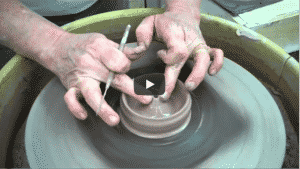


Responses